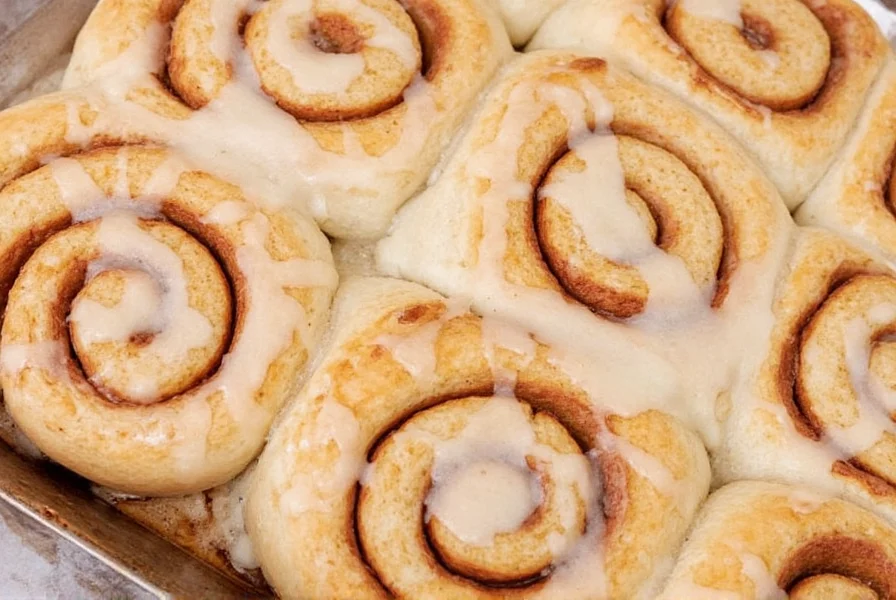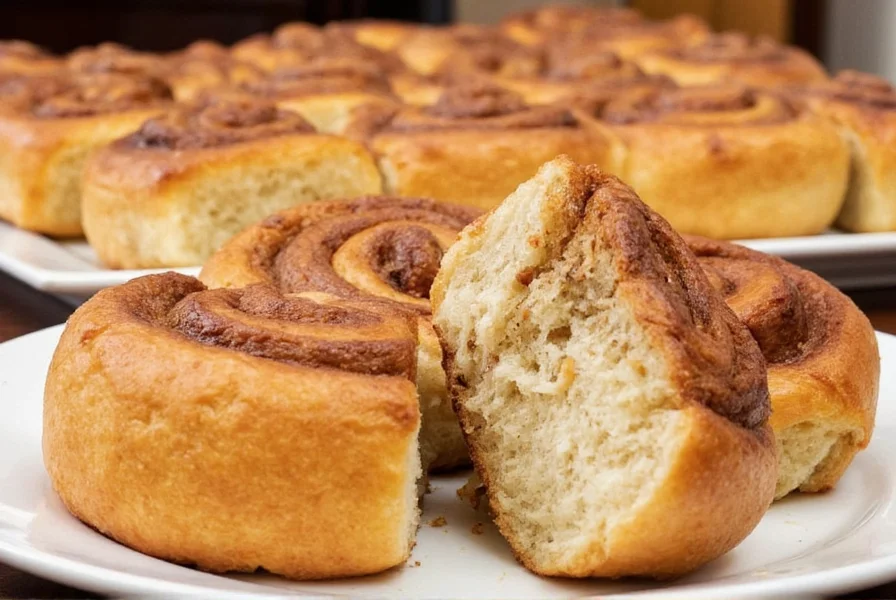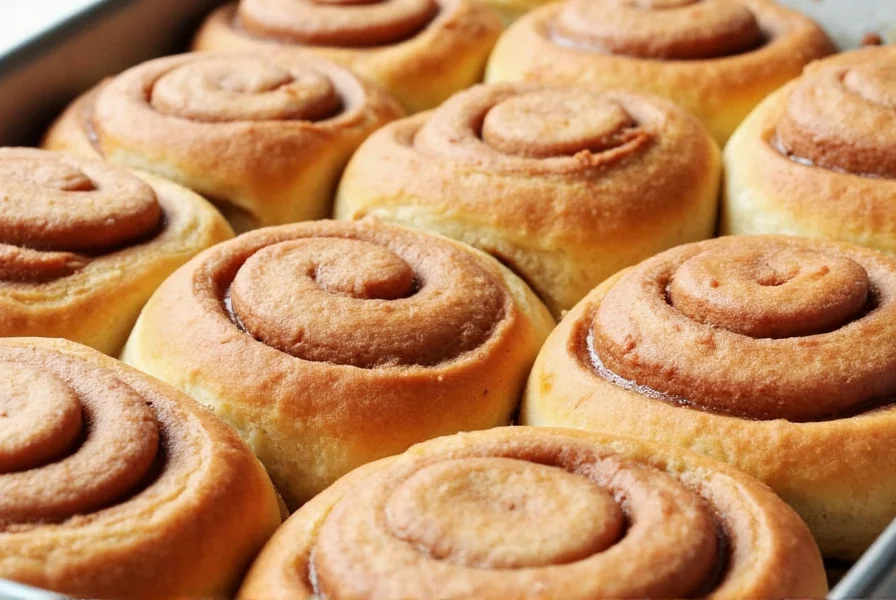When searching for the best cinnamon rolls, home bakers and dessert enthusiasts often struggle to separate marketing hype from genuine quality indicators. This comprehensive guide cuts through the noise with evidence-based insights from professional pastry chefs and baking science to help you understand what truly makes exceptional cinnamon rolls—whether you're baking at home or selecting from bakery options.
What Defines Truly Exceptional Cinnamon Rolls
While personal preferences vary, culinary experts consistently identify several non-negotiable elements that distinguish superior cinnamon rolls from average ones. The foundation lies in the dough's texture—properly developed gluten structure creates that coveted pull-apart softness without being gummy. Temperature control during proofing proves more critical than most home bakers realize; dough rising at 78-82°F develops optimal flavor complexity while avoiding the sour notes of over-fermentation.

Ingredient Quality: Beyond Basic Grocery Store Options
Not all cinnamon delivers equal flavor impact. While common grocery store "cinnamon" often contains cassia with harsh, bitter notes, the best homemade cinnamon rolls recipe typically specifies Saigon or Ceylon varieties. Saigon cinnamon provides intense, sweet heat ideal for bold-flavored rolls, while Ceylon offers delicate complexity better suited for refined palates. Professional bakers recommend toasting whole cinnamon sticks then grinding them fresh—a technique that preserves volatile oils lost in pre-ground products.
Butter quality dramatically affects filling texture and mouthfeel. European-style cultured butter with higher fat content (82-86%) creates a smoother, richer filling that doesn't separate during baking. When developing your cinnamon roll baking tips repertoire, note that clarified butter in the filling prevents excess moisture that can make rolls soggy.
Mastering the Dough: Hydration and Development Secrets
The cinnamon roll dough secrets professionals guard most closely involve precise hydration control. Ideal dough contains 58-62% hydration (water relative to flour weight). This seemingly small range makes the difference between dry, crumbly rolls and perfectly tender ones. Experienced bakers adjust liquid content based on flour protein content and ambient humidity—factors rarely addressed in standard recipes.
| Dough Temperature | Proofing Time | Flavor Development | Texture Result |
|---|---|---|---|
| 70-75°F | 2.5-3 hours | Mild, slightly sweet | Dense, chewy |
| 78-82°F | 1.5-2 hours | Complex, balanced | Light, fluffy |
| 85-90°F | 45-60 minutes | Sour, fermented | Gummy, uneven |
Avoiding Common Cinnamon Roll Mistakes
Even experienced bakers fall victim to preventable errors that compromise results. The most frequent issue? How to prevent dry cinnamon rolls—typically caused by overbaking or insufficient fat content. Professional kitchens use instant-read thermometers to remove rolls at exactly 190°F internal temperature, preventing moisture loss from continued cooking.
Another critical mistake involves filling application. Spreading filling too close to dough edges creates seal failures during baking, while insufficient coverage leaves flavorless gaps. The best cinnamon roll filling ratio follows a 3:2:1 formula—3 parts sugar, 2 parts softened butter, 1 part cinnamon—with optional additions like nutmeg or cardamom in small quantities.
Glaze Science: More Than Just Sweetness
While cream cheese glaze remains popular, understanding when to use alternatives represents advanced cinnamon roll baking techniques. Simple confectioners' sugar glazes work better with intensely spiced rolls, while cream cheese complements milder cinnamon varieties. Temperature matters significantly—applying glaze to rolls above 140°F causes it to soak in unevenly, while below 100°F creates a stiff, unappealing layer.
Regional Variations Worth Exploring
Traditional American cinnamon rolls differ significantly from Scandinavian kanelbullar, which use cardamom in the dough and pearl sugar topping. Texas-style rolls incorporate brown sugar and pecans, while Midwestern versions often feature a caramel-like icing. When seeking the best cinnamon for cinnamon rolls experience, consider these regional approaches as inspiration rather than strict recipes.
Storage and Serving: Maintaining Peak Quality
Proper storage techniques preserve freshness far better than most home bakers realize. The cinnamon roll baking temperature guide continues after removal from the oven—cooling rolls completely before glazing extends freshness by 12-18 hours. For optimal reheating, professional kitchens use steam-injected ovens at precisely 275°F for 8-10 minutes, though home bakers can achieve good results with a damp paper towel in the microwave at 50% power.

FAQ: Frequently Asked Questions About Cinnamon Rolls
What's the ideal baking temperature for cinnamon rolls?
Professional bakers recommend 350-375°F for most cinnamon roll recipes. Lower temperatures (325°F) work better for larger rolls to ensure even cooking without burning, while smaller rolls benefit from the higher end (375°F) for optimal browning. Always verify doneness with an instant-read thermometer—190°F internal temperature indicates perfect baking.
How can I make my cinnamon rolls softer and fluffier?
Achieving soft, fluffy cinnamon rolls requires attention to multiple factors: proper dough hydration (58-62%), controlled proofing temperature (78-82°F), adequate gluten development through proper kneading, and precise baking time. Adding 1-2 tablespoons of milk powder to your dough enhances tenderness, while replacing some water with potato water adds moisture retention properties without altering flavor.
Why do my cinnamon rolls sometimes become hard the next day?
Cinnamon rolls harden due to starch retrogradation—the process where moisture migrates from starch molecules back into the surrounding environment. To prevent this, store rolls in an airtight container with a slice of bread or apple wedge, which releases moisture slowly. For longer storage, freeze rolls before glazing, then thaw and reheat properly. Never store glazed rolls at room temperature for more than 24 hours.
Can I prepare cinnamon roll dough ahead of time?
Yes, professional bakeries routinely prepare dough in advance. For best results, complete the first rise, shape the rolls, then refrigerate them covered for 8-12 hours. When ready to bake, remove from refrigerator 30 minutes before baking to take the chill off—this allows for more even rising and baking. Alternatively, freeze shaped rolls on a parchment-lined baking sheet, then transfer to freezer bags for up to 3 months.
What's the difference between cinnamon roll types that affects quality?
Quality differences stem from ingredient ratios and technique rather than type. Traditional American rolls use higher sugar and fat content with cream cheese icing. Scandinavian versions feature cardamom in the dough and pearl sugar topping with less sweetness. Texas-style incorporates brown sugar and pecans. The best cinnamon rolls regardless of style maintain proper dough-to-filling ratio (typically 3:1), quality ingredients, and precise baking control.











 浙公网安备
33010002000092号
浙公网安备
33010002000092号 浙B2-20120091-4
浙B2-20120091-4